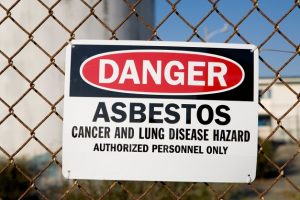What to do if you have been exposed to Asbestos?
30th August 2019Asbestos is a well-known health hazard, causing panic when discovered in local buildings and pipework. Asbestos was widely used for years due to its unusual properties – the mineral fibers are flexible and resistant to heat, chemicals, and electricity. This made asbestos an ideal choice for the construction industry, who used it to create a variety of products, including:
- Insulation
- Shingles
- Siding on housing
- Blankets
- Car brakes
- Flooring tiles
- Decorative purposes
- Fireproof clothing (for firefighters)
- And much more…

Asbestos was known to have negative health effects from the early 1900’s, with the first death from asbestos being recorded in 1906. However, it was not until 1985 that asbestos was banned in the UK and no longer allowed in any construction processes. Due to the extensive use of asbestos over nearly a century, and even though the substance was banned, asbestos was still present in almost every building that had been constructed during this time. This leaves the whole population susceptible to asbestos exposure, which can cause all types of health hazards in both humans and animals.
If you think you’ve been exposed to asbestos, then you’re probably right, as the material was so widely implemented that you’re bound to have come into contact with it at some point in your life. Short term exposure to asbestos can result in fibers settling on your skin or you accidentally swallowing them. Although, breathing them in can cause an issue.
What to do after short term exposure to asbestos?
We don’t yet know exactly how much asbestos exposure is safe, a one-time exposure is definitely more safe than continued exposure over a period of time. If you’ve been exposed to the substance, we recommend:
- Washing your body and clothes as soon as possible.
- Making the source of the asbestos known to anyone else who may come into contact with it.
- Reporting the source of the asbestos to the local council. If the source of asbestos is in your home, then it is crucial to hire a professional asbestos waste company so they can remove it safely and quickly.
What to do after long term exposure to asbestos?
Long term exposure to asbestos can cause a variety of symptoms. Asbestosis is a serious, long-term lung condition that is caused by sustained exposure to asbestos. People who are at the highest risk of asbestosis are people who worked in the building or construction industry during the 1970s-1990s. Symptoms of asbestosis include:
- Shortness of breath
- Coughing
- Wheezing
- Fatigue
- Pain in your chest or shoulders
- Swollen fingertips
If you have any of these symptoms, it is important you see a doctor immediately so you can verify it is asbestosis and start treatment. The GP will take you through a variety of tests to confirm the diagnosis, but unfortunately, once asbestosis has developed, it’s not possible to reverse the lung damage. The only available options are:
- Pulmonary rehabilitation – exercise sessions and advice on how to manage your symptoms.
- Oxygen therapy – breathing in oxygen-rich air to improve breathlessness and increase oxygen levels in the blood.
- Vaccinations – ensuring you have all relevant vaccinations, such as the flu jab, to prevent any illnesses which may limit breathing efficiency.
- Stop smoking – people who smoke report having worse symptoms than those who don’t.
You’ll likely be able to claim some compensation for asbestos exposure if you’ve had health issues resulting from the exposure. Ensure you get specialist advice before you file a claim as asbestos-related diseases can be complex to claim for.
If you’re looking for a fully comprehensive asbestos disposal company, then look no further than Asbestos Waste Solutions. Our team pride themselves on the proper disposal of asbestos for both domestic and commercial clients in the safest way possible for both yourself and our staff. For more information on our services, get in touch with a member of our team today.
This entry was posted in Asbestos Disposal. Bookmark the permalink.

 Follow
Follow